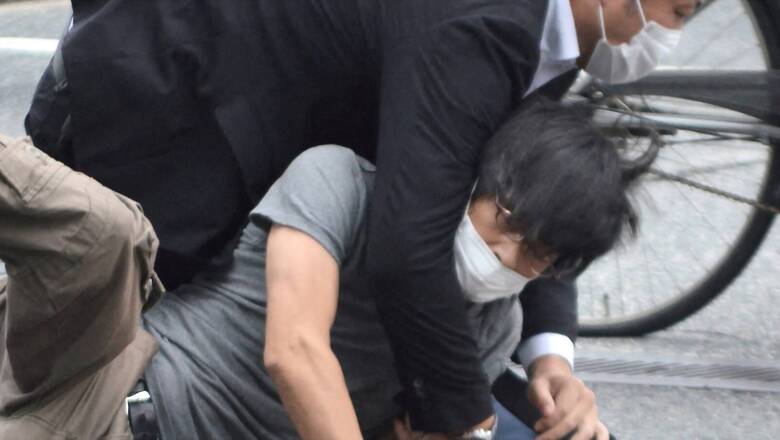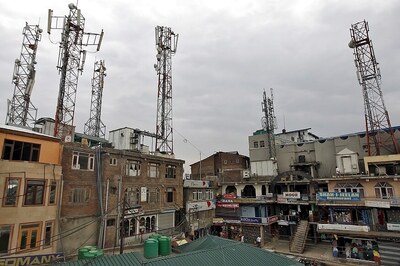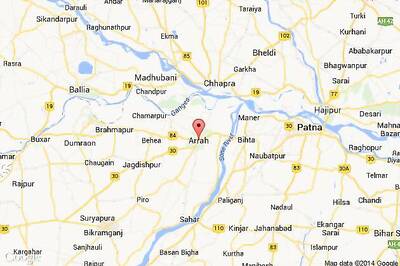
views
Following the assassination of former Japan prime minister Shinzo Abe several weapons experts said the weapon used to kill him could be made easily using readily available commercial components, according to a report by Japan Times.
The autopsy report of Abe revealed that the former prime minister was struck twice by at least two projectiles. It was also seen that the first shot missed him entirely.
The reason the first shot missed Abe was because the handmade rudimentary gun was not rifled. A rifled gun means that it contains inner spiral grooves which help the bullet take an accurate trajectory.
However, authorities are concerned about how Tetsuyo Yamagami, the man in his 40s who killed Abe, made what weapons experts are calling a ‘rudimentary shotgun’.
Easy-To-Access Materials And DIY Tutorials
When the Japanese police officials raided Yamagami’s home they found confiscated additional handmade guns of a similar type. This suggests Yamagami was making these weapons for a long-time. Questions were also raised regarding from where Yamagami obtained the knowledge of making such weapons.
While some have pointed to Yamagami’s service in the Japanese Navy, it is unlikely he learned to make weapons there and only learnt how to handle weapons.
Matthew Moss, a UK-based small arms specialist and historian, said the weapon and ammunition used to kill Abe is crude but easy to construct. Another weapons expert Amael Kotlarski, editor of “Jane’s Infantry Weapons” referred to the plumes of smoke that came out of the 40-by-20-centimeters weapon and said it is unlikely that the assailant used black powder rather than the typical smokeless powder that is used in modern guns.
He also said that the black powder obtained by Yamagami could also have been made by him rather than being procured commercially. It remains, like the other objects used in making the gun, available in markets.
“Any reasonably intelligent person could make these things with a bit of research and technical ability. Moreover, firearms communities, including those for 3D-printed weapons, publicly release specs for the designs of electric firing mechanisms. It’s all out there,” Kotlarski was quoted as saying by Japan Times.
Other weapons experts like Matthew Moss also said that all of this information is available online since there are surprised reactions regarding Yamagami’s ability to string together a weapon in a relatively short time.
He said all it will take is basic engineering knowledge along with some knowledge of physics and chemistry.
The materials used to make the gun – wood for the frame, plumbing pipes for the barrels, electrical tape, commercial batteries for the ignition and electrical wiring – are readily available outside at any hardware store.
There is no evidence that a 3D-printer was used to manufacture the weapon.
Moss and Kotlarski both said that information on building guns is readily available online.
Ammo Type
Experts are divided regarding how the ammunition used for killing Abe was made. NR Jenzen-Jones, the director of Armament Research Services — a consultancy specializing in arms and munitions analysis – told news outlet Japan Times that the weapon was fired using separate-loading ammunition.
Due to the separate-loading ammunition build of the handmade gun, it is likely the propellant and projectile were loaded into the weapon separately, either from the breech or the muzzle in a manner that is similar to a musket – used before modern guns came into prevalence.
The projectiles used in the shooting were most likely slugs, Japan Times reported citing analysts. Since there was no rifling, Yamagami may have loaded several buckshot-like smaller projectiles into each barrel to increase the probability of hitting his target.
This also explains why Yamagami moved closer to fire the second shot and why the first shot missed Abe entirely. “Considering Abe’s apparent lack of reaction to the first shot, as captured on video, it appears likely that the assailant had loaded multiple projectiles into each barrel of his weapon, creating a crude shotgun,” Jenzen-Jones told Japan Times.
The weapon was fired using an electric firing mechanism which allowed Yamagami to fire each barrel independently, which means it is likely that he fired two separate shots from each barrel within a gap of a few moments. This further raises speculations that the handmade gun was most likely muzzle-loaded, as in Yamagami loaded the weapon with bullets from the front-end of the barrel.
Yamagami also said each gun barrel was designed to fire one casing containing six small projectiles. “This lack of rifling, taken together with the short-barrel length and generally crude construction, indicate that the firearm most likely possesses a very limited range and is imprecise,” Jenzen-Jones further added.
Fears have grown regarding the prevention of such crimes in the future. Nihon University’s Mitsuru Fukuda, an expert on terrorism and gun-related violence said there are air guns and model guns-owners who have made dangerous modifications to make the more lethal.
Though suspicions of usage of a 3D-printer have been put aside, Japan earlier in the 2010s has seen two cases where people were arrested for manufacturing a gun using a 3D-printer.
Fukuda also expressed concerns that tutorial material online and ready availability of items required to make the weapon shows that gun control legislations are not enough and there are also concerns that copycat crimes may follow.
Read all the Latest News, Breaking News, watch Top Videos and Live TV here.
















Comments
0 comment